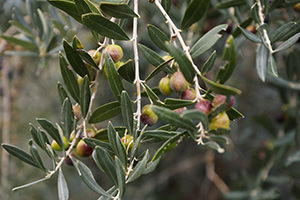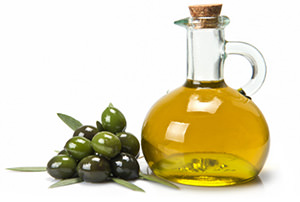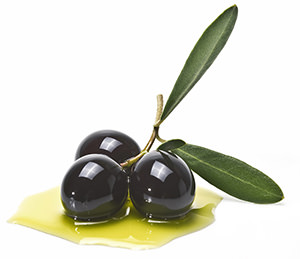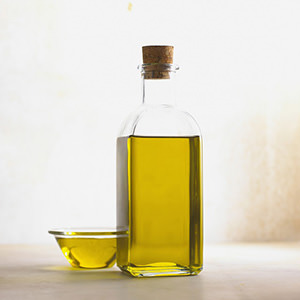
What’s The Difference Between Regular Olive Oil and Extra Virgin Olive Oil
Posted on 04 Dec, 2021

Ever stared in confusion at the different olive oil labels at the store and wondered if there really was a difference between extra virgin olive oil and regular olive oil? And what about pure olive oil and lite olive oil? Is there a difference between these oil categories, and if so, what are they?
 Olive Oil Is All About The Process
Olive Oil Is All About The Process
Generally speaking, "olive oil" is simply the oil that's obtained from the fruit of olive trees. In itself that sounds pretty simple and straightforward.
But there are different varieties of olive oil that are set apart not by the type of olive that's used, but the process used to extract the oil, as well as by the additives, and the oil's level of free oleic acid.
How Olive Oil Is Graded
Looking at this particular brand of olive oil and extra-virgin olive oil side by side, you can see that the extra-virgin olive oil has a noticeably darker color, while the regular olive oil has a lighter, brighter hue.
This color differential, however, varies from brand to brand, and it is deceptive. You cannot use color to reliably tell two grades of oil apart. Olive oils can vary drastically in taste and quality, and color is only one factor and not the distinguishing one.
 Olive oil is graded by its level of acidity, or free oleic acid. The amount of free oleic acid in olive oil indicates the extent to which fat has broken down into fatty acids.
Olive oil is graded by its level of acidity, or free oleic acid. The amount of free oleic acid in olive oil indicates the extent to which fat has broken down into fatty acids.
Refined vs. Unrefined Olive Oil
Olive oil also falls into two distinct categories: refined and unrefined. While unrefined oils are pure and untreated, refined oil is treated to remove flaws from the oil, making it more sellable.
Refined oils have little or no olive aroma, flavour, or colour (what they have gets there via blending in few percent of an extra-virgin oil). They also have no bitterness.
In contrast to unrefined extra-virgin olive oil, refined oils lack the important antioxidants and anti-inflammatories that make extra-virgin oil so special.
Extra-Virgin Olive Oil
The ‘extra virgin’ label on your olive oil has nothing to do with lightness in colour and flavour, but is actually a mark of purity and quality.
 Extra-virgin olive oil is an unrefined oil and the highest-quality olive oil you can buy. There are very specific standards oil has to meet to receive the label "extra-virgin"and some highly influential features are present well before the olives hit the press. Ideally, the fruit of the olive trees has to be disease-free, harvested at the right time and processed immediately. Because of the way extra-virgin olive oil is made, it retains more true olive taste, and has a lower level of oleic acid than other olive oil varieties. It also contains more of the natural vitamins and minerals found in olives.
Extra-virgin olive oil is an unrefined oil and the highest-quality olive oil you can buy. There are very specific standards oil has to meet to receive the label "extra-virgin"and some highly influential features are present well before the olives hit the press. Ideally, the fruit of the olive trees has to be disease-free, harvested at the right time and processed immediately. Because of the way extra-virgin olive oil is made, it retains more true olive taste, and has a lower level of oleic acid than other olive oil varieties. It also contains more of the natural vitamins and minerals found in olives.
Extra-virgin olive oil is considered an unrefined oil since it's not treated with chemicals or altered by temperature. What sets it apart is the low level of oleic acid and the absence of sensory flaws. It contains no more than 1% oleic acid and typically has a golden-green color, with a distinct flavor and a light peppery finish.
While you can cook with extra-virgin olive oil, it does have a lower smoke point than many other oils, which means it burns at a lower temperature. Save the pricey good quality stuff for dipping bread, dressing, dips, cold dishes, and use the less expensive stuff for cooking and baking.
 Extra virgin olive oil deteriorates over time. The further away it has to travel and the more it has to be handled, the likelier it will be that the quality and freshness will be affected. As such, it’s sometimes best to buy locally.
Extra virgin olive oil deteriorates over time. The further away it has to travel and the more it has to be handled, the likelier it will be that the quality and freshness will be affected. As such, it’s sometimes best to buy locally.
Virgin Olive Oil
Next in quality, as categorized by the standards of the International Olive Council, is virgin olive oil. It's made using a similar process as extra-virgin olive oil and is also an unrefined oil, meaning chemicals or heat are not used to extract oil from the fruit. Virgin olive oil also maintains the purity and taste of the olive, though production standards are not as rigid.
According to the standards of the International Olive Council, virgin olive oil has a slightly higher level of oleic acid. It also has a slightly less intense flavor than extra-virgin olive oil.
Virgin oil is rarely found, if ever, however, in grocery stores; usually your choice will be between extra-virgin, regular, and light olive oils.
Pure Olive Oil
You may also recognize oil labeled as simply olive oil or pure olive oil — this is what we'd consider "regular" olive oil. This oil is typically a blend of virgin olive oil and refined olive oil (heat and/or chemicals are used in the process of extracting oil and removing flaws from the fruit).
 Pure olive oil is a lower-quality oil than extra-virgin or virgin olive oil, with a lighter color, more neutral flavor, and oleic acid measuring between 3-4%. This type of olive oil is an all-purpose cooking oil.
Pure olive oil is a lower-quality oil than extra-virgin or virgin olive oil, with a lighter color, more neutral flavor, and oleic acid measuring between 3-4%. This type of olive oil is an all-purpose cooking oil.
Light Olive Oil
This is the type of olive oil where the name may spark some confusion. "Light" doesn't refer to this olive oil being lower in calories. Rather, it is a marketing term used to describe the oil's lighter flavor.
Light olive oil is a refined oil that has a neutral taste and a higher smoke point. It can be used for baking, sautéing, grilling, and frying.
 Can They Be Substituted for Each Other?
Can They Be Substituted for Each Other?
The simple answer is yes. If a recipe calls for olive oil, as many do, you can use extra-virgin or regular olive oil. It's up to you, and largely based on personal preference. Both extra-virgin and regular olive oil can be used in baking and cooking, but do keep in mind their differing smoke points.
However, as a rule of thumb, stick to the more flavorful extra-virgin olive oil for dipping bread, in dressings, dips, and dishes that will not be cooked, and for finishing, so that the flavor can shine through.
Great Books On How To Eat Right

by Michael Moss

by John Berardi

by Michael Pollan

by Michael Greger

 Can You Be Vegetarian And Still Compete On A World Class Level?
Can You Be Vegetarian And Still Compete On A World Class Level? Superfoods That Are Making A Comeback
Superfoods That Are Making A Comeback How Much Chocolate Can You Eat Before It Kills You?
How Much Chocolate Can You Eat Before It Kills You? How to Breathe For Every Type Of Exercise
How to Breathe For Every Type Of Exercise










